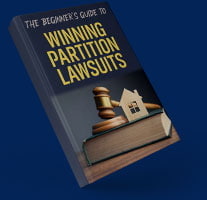Lynwood Partition Lawyers
Lynwood is a city in the San Gabriel Valley in Los Angeles. Lynwood’s history began with a settlement colonized by Spanish aristocrats, or dons, and American pioneers who purchased, settled, and formed a small communal town in the area. According to Redfin, in March 2024, the median sales price was $660,000 and homes stay on the market for 18 days. Lynwood residents who own real estate may face disputes with co-owners. Generally, the best Lynwood Partition Lawyers usually find partition action to be the best remedy for disputing co-owners in four broad categories:
- Family owned real estate where only one party wants to sell;
- Former romantic partners who jointly own real estate where only one party wants to sell;
- Jointly owned real estate where only one party wants to sell;
- Partnership real estate where only one party wants to sell;
What is a Partition Action?
Partitions are lawsuits that split up the property between multiple co-owners so that each can take their equity out of the home. The prototypical partition are between siblings, former romantic partners, or business partners. Both own parts of the property, but only one wants to end the relationship and take their money out. Partitions enable this to happen, usually ending with a court-ordered sale of the subject property.
Basically, any person who is an owner of real estate can bring a partition action in California. Code of Civil Procedure section 872.710, subdivision (a), states “A partition action may be commenced and maintained by any…owner of…such property.” California Civil Code section 872.210 provides a property owner with the “absolute right to partition” absent a valid waiver. Thus, a partition action can be brought by anyone who no longer wants to own jointly owned real estate, other than spousal property.
Generally, a partition action cannot be stopped absent a valid waiver. The instances in which a court has found a valid waiver have generally involved some sort of written contract or adverse possession of property. As such, many parties try to stop a partition action through mediation, or a buy-out agreement. In most instances, the parties to a partition action can benefit from creative lawyering by those who are familiar with the different options for resolving real estate disputes. The best Lynwood Partition Lawyer will be able to share information on this process with you.
What are the steps in a Partition Action?
Generally, the first step in the partition lawsuit process is not a lawsuit, but an earnest attempt to resolve the matter informally, such as through a partition agreement. Only when it is clear that litigation is the only option, is it clear that a partition lawsuit is appropriate.
When it is clear that a partition lawsuit is necessary, then the process begins with the filing of a complaint in the county where the property is located. There are several technical requirements for the partition complaint, and many important steps that must be taken during the lawsuit to ensure that the process is managed effectively.
In a partition lawsuit, there are generally four different steps. First, the court determines each party’s ownership interests. Second, the court will decide on the manner of sale. Third, the court will order the property be sold. Fourth, the proceeds from the sale will be divided between the parties based on their relative contributions to the property.
While some may believe that inherited property cannot be partitioned, this is incorrect. Instead, when the property is owned as the result of an inheritance, there may be an additional step for an appraisal, and a right of first refusal, as provided by the Uniform Partition of Heirs Act. Under this act, where a co-tenant requests partition by sale, the law gives the non-partition owner the option to buy all of the interests of the co-tenants who requested the sale. A top Lynwood Partition lawyer will be familiar with the process.
Can You Mediate a Partition Action?
A partition action can always be resolved informally at any time prior to the first day of trial, or entry of judgment. In fact, in numerous instances, just filing the partition itself leads the other party to seek a resolution between them. We always encourage the parties to talk throughout every phase of the process, as that can lead to the best outcomes for everyone.
From our perspective, every piece of litigation is just part of a larger “negotiation.” In any negotiation, the party who has the best leverage is usually able to achieve a more favorable outcome. The lawsuit provides the client with more leverage because they have more options available to them than without the prospect of a resolution from a judge. As such, all that a lawsuit does is provide one party with more leverage in the negotiation about how to resolve the dispute. For this reason, the best way to informally resolve a dispute is to combine discussions with active litigation, so that the matter can be quickly resolved without unnecessary expense. Throughout the process, our attorneys are in touch with our clients about their options and the prospects for informal resolution through mediation or negotiation. A knowledgeable Lynwood Partition Attorney will be able to give you good advice on these issues.
What Are Claims for Contribution?
A partition action frequently involves disputes related to the allowance for improvements by one joint owner or the other. The court may, in all partition cases, make an order for an allowance, accounting, contribution, or other compensatory judgment among the parties in accordance with the principles of equity. (CCP § 872.140.) For instance, the court may make an equitable adjustment in order to offset the use value of the property against the improvement expenses. (see Hunter v. Schultz (1966) 240 Cal.App. 2d 24, 31.)
Code of Civil Procedure section 872.140 allows the court to make such orders for compensatory adjustments for items such as common improvements, unaccounted rents and profits, and other matters where contribution may be required. (Cal. L. Rev. Comm. Comment to CCP § 872.140.) An example of these types of improvements could be for remodeling a bathroom, rebuilding a deck, or painting the outside of the house. The property must be divided in a manner that allocates an individual any part that he or she has improved or that individual’s predecessor in interest, to the extent that it is practical and can be done without materially injuring the rights of the other co-owners. The determination of a division of allocation does not include the value of the improvements. (CCP § 873.220.) An experienced Lynwood Partition Attorney will be intimately familiar with these matters.
A Partition Case Study: Caiozzo v. 2672 to 2673 North Beachwood (2023)
A motion for interlocutory judgment is common in partition actions. Under Code of Civil Procedure section 872.720, the court must enter an interlocutory judgment when the court finds that the Plaintiff in a partition action is entitled to a partition. The statute allows the trial court to either (1) determine the manner of partition in the interlocutory judgment; or (2) enter an interlocutory judgment confirming the plaintiff’s right to partition while reserving the determination of the manner of partition for the final judgment. (Summers v. Superior Court (2018) 24 Cal.App.5th 138, 143) The following paragraphs discuss how the court makes determinations regarding such interlocutory order in Caiozzo v. 2672 to 2673 North Beachwood (2023) 2023 WL 7485496.
In Caiozzo, Cally Williams Ciaozzo, the trustee of the Harry A. Williams Family Trust (the “Trust”), filed suit against 2672 to 2674 North Beach Wood Drive, LLC (the “LLC”) for partition by sale of the Property. In response, the LLC filed an answer and cross-complaint for breach of fiduciary duty, conversion, and fraud. The Williams family held the ownership of the Property since 1962. In 1984, Harry and Martha Williams transferred their undivided one- half interest in the Property to Harry A Williams and Cally (Harry’s daughter) or their successors as trustees of the Harry A. Williams Family Trust. Upon Harry’s death in March 2020, Cally became the sole trustee of the Trust. The LLC acquired its undivided one- half interest to the Property through a series of transfers from 2014-2019 from the successor co-trustees of the Dino Williams Family Trust.
At trial, Cally moved for summary adjudication partition and sought an appointment of a referee to sell the Property under Code of Civil Procedure (CCP) section 873.010 (a). The court held that Cally met her burden of proof in establishing that she is the trustee of the Trust and that the Trust is a co-owner of the property, and she did not waive her right to partition. However, the court found that she did not meet her burden of proving that the sale of property is more equitable than a division in kind. It concluded that appointing a referee, pursuant to section 872.820(b) would be beneficial in assisting the court to make such determination and continued the hearing on motion until the court received the referee’s report. Nevertheless, the parties filed a stipulation seeking entry of a final order granting the motion for summary adjudication of the Property’s partition and an interlocutory judgment on of partition without deciding the issue on partition by kind or by sale. The court granted the Interlocutory Judgment without further proceedings in the court such that the LLC could immediately appeal the grant of the summary judgment. The LLC appealed from the interlocutory judgment.
The California Second District Court of Appeal affirmed the interlocutory judgment. On appeal, the LLC contended that the trial court erred by granting plaintiff’s motion because: (1) plaintiff failed to prove each element of her claim for partition by sale; and (2) triable issues of material fact exist regarding the issues of standing and the LLC’s equitable defenses.
In its appeal, the LLC argued that Cally failed to prove each element of her claim because she did not establish that a sale is more equitable than a division in kind. The court held that such claim by LLC is barred by the doctrine of invited error as it entered a stipulation with Cally requesting the grant of the motion without deciding the issue of partition in kind or by sale. Additionally, the court held that the trial court correctly followed California Code of Civil Procedure Section 872.720 and Section 872.820; after finding that Cally was entitled to partition as a matter of law. Based on the parties’ stipulation, the trial court entered an interlocutory judgment that determined the parties’ interests in the Property, ordered its partition to later determine the manner of partition. Therefore, the court found that there was no error in this regard.
On the issue of whether triable issues of material fact exist regarding Cally’s right to partition, the court stated that Cally submitted a declaration and other documentary evidence exhibiting her undivided one-half interest in the property. The LLC, however, provided no evidence to show that Cally was not the trustee of the Trust. Thus, the court held that the LLC did not meet its burden to show that triable issues of fact exist regarding Cally’s status as the sole trustee of the Trust, and the Trust’s undivided one-half interest in the property. Additionally, regarding the equitable defenses, the court cited Code of Civil Procedure section 872.710(b), which provides that the only equitable defense relevant to a concurrent landowner’s right to partition is a valid waiver. The court also noted the trial court’s extensive analysis of whether triable issues exist regarding the LLC’s argument that Cally waived her right to partition, finding that none exists. The court also remarked that the LLC’s argument that the case law expands on the exceptions to the entitlement to a partition was based on a case law that did not address Section 872.710. The court held that the case law did not guide the court’s analysis as Section 872.710 was enacted the same year as the decision cited and the decision did not address the statutory provision.
The court therefore concluded that the trial court did not err by considering only the LLC’s waiver defense when analyzing whether Cally had a right to partition. The court of appeals affirmed the interlocutory judgment and remanded the case to trial court for further proceedings, directing it to consider all the LLC’s equitable defenses in determining whether Cally meets her burden to demonstrate a sale of the property is more equitable than a division in kind.
How the Underwood Law Firm Can Help
A request for interlocutory judgment is frequently made in partition actions. How the court decides whether such judgment is proper in a case depends on various factors. If you are considering partition as an option, or find yourself defending one, then you may benefit from good legal advice on the topic. Please contact Underwood Law Firm, P.C., for an initial consultation.









